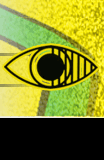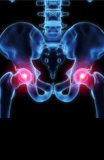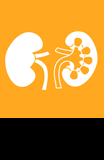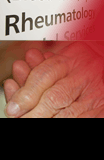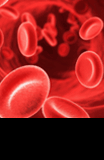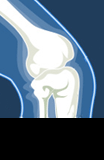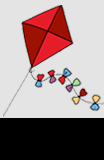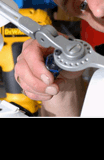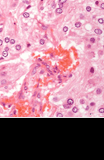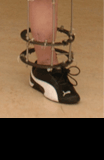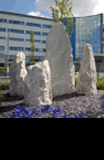Procedures by site
Breast
Breast lump excision
Breast tissue removed and sent for histology - if benign or fibrous may require no further treatment.
Breast duct excision
One or all milk ducts cut from beneath the nipple - any tissue removed sent for analysis.
Wide local excision of breast lesion
To remove benign and malignant lesions whilst conserving the normal shape of the breast, for lesions up to 4cm in diameter. Larger excisions are categorised as a mastectomy. Procedure can also involve removal of the sentinel lymph nodes in the axilla ( the first nodes cancer may spread to).
Breast lump excision / lumpectomy
To remove a lump in the breast. If the entire lump is surgically removed, this is called a lumpectomy. An incision is made, and the lump and the surrounding rim of normal breast tissue are removed and sent to the laboratory for investigation.
Mastectomy, mammoplasty and breast reconstructive surgery
Involves removing the breast to excise cancerous lesions - may be done with simultaneous reconstructive surgery.
Endocrine
The thyroid gland is in the lower part of the front of the neck. It is divided into two halves on either side of the windpipe with a bridge of tissue joining them across the middle. The thyroid produces the hormone thyroxin, which controls the rate at which the body's metabolism runs.
Parathyroid surgery / parathyroidectomy
Removal of part or all of the parathyroid glands.
Thyroid lobectomy
Removal of half of the thyroid gland. This operation on the thyroid is done through an 8cm skin crease incision across the front of the neck.
Total thyroidectomy
Removal of the whole of the thyroid gland. As with the thyroid lobectomy, this is also done with an 8cm skin crease incision across the front of the neck.
Laparoscopic surgery
The surgeon will make a multitude of small cuts, depending on the surgical specialty and procedure (about 5-10mm long) into the skin. Carbon dioxide gas is then pumped into the abdomen, creating more room for the surgeon to work in and making it easier to see the internal organs.
The laparoscope (a long, thin telescope with a light and camera lens at the distal end) is then passed through one of the small incisions holding a trocar, and the surgeon will examine the internal organs by looking at the images the telescope transfers onto the video screens.
Specially adapted surgical instruments are passed through the other skin incisions, holding the trocars to help move the internal structures so that the surgeon can see around them and identify the organs on which the surgery is to be carried out.
General surgery - upper gastrointestinal
Staging laparoscopy and oesophago-gastro-duodenoscopy
Procedure to look inside the abdomen, oesophagus, stomach and duodenum to assess the spread of cancers.
Laparoscopic hernia repair
A hernia occurs when a part of an internal organ or body part protrudes into an area where it should not. A laparoscopic hernia repair is when surgery is performed using a keyhole approach involving telescopes and small incisions to allow access for the trocars and surgical instruments. A mesh is then placed in the abdominal wall at the weak spot, where the hernia occurred, to strengthen it.
Umbilical hernia repair
An umbilical hernia is a result of weakness in the muscles or around the belly button, causing the belly button to pop outwards. It can happen at any age.
Femoral hernia
A femoral hernia occurs when tissue pokes through into your groin or the top of your inner thigh. It pushes through a weak spot in the abdominal wall called the femoral canal.
Incisional hernia
This occurs in an area of weakness caused by an incompletely healed surgical wound.
Inguinal hernia
An inguinal hernia is a lump in the groin that occurs when part of the intestine pushes through a weakness in the muscles of the abdominal wall.
Laparoscopic cholecystectomy
Surgical removal of the gallbladder using a keyhole approach.
Open cholecystectomy
Surgical removal of the gallbladder through an open incision to the abdomen.
Nissen fundoplication
A procedure done to treat gastro-oesophageal reflux disease and hiatal hernias, involving wrapping the top part of the stomach around the lower part of the gullet. This, in turn, tightens the closing mechanism at the lower end of the gullet, creating a one-way valve which prevents stomach acid from moving back into the gullet. Can be done either as a laparoscopic or an open procedure.
Vulval excisions
Excision of part of the vulval area of the vagina.
Exploratory laparoscopy
Exploration of the inside of the abdomen for diagnosis and assessment for possible further surgery.
Laparoscopic hysterectomy and salpingo oophorectomy
Removal of the uterus, ovaries and Fallopian tubes using a keyhole approach.
Head and Neck, Ear, Nose, and Throat (ENT)
Tonsillectomy
Removal of the tonsil glands.
Micro laryngoscopy and pandendoscopy
Examinations under an anaesthetic of the larynx, pharynx, trachea, and oesophageal areas.
Oral surgery
Dental clearance
Removal of multiple teeth, either due to decay or infection or in preparation for further intervention.
Other dental extractions
A dental extraction (also referred to as exodontia) is the removal of a tooth from the mouth. Dental extractions can include the removal.
Plastics
Skin biopsies
These are taken for diagnosis. This procedure may be done under local or general anaesthesia.
Wide local excisions
Excision of tumours often for melanoma, sometimes accompanied by skin grafts.
Lower gastrointestinal / colorectal surgery
EUA rectum
Examination under anaesthetic of the rectum.
Fissurectomy
An anal fissure is an unnatural crack or tear in the skin of the anal canal. A fissurectomy is the surgical removal of an anal fissure.
Fistula surgery
A fistula is a tiny channel or tract that develops in the presence of inflammation and infection. With fistula surgery the roof of the anal fistula is cut away. This changes it from a tunnel into a trench which becomes shallower as it heals and ends up as a flat scar in a month or two.
Haemorrhoidectomy
Piles (haemorrhoids) are the loose lining of skin that bulges out through the ring muscle which holds the back passage shut. They contain blood vessels which can bleed or clot up and cause pain. The loose skin then causes irritating tags. Haemorrhoidectomy simply means the removal of these haemorrhoids. During a haemorrhoidectomy the ring muscle is stretched, and the piles are trimmed off.
Pilonidal sinus
Pilonidal means a 'nest of hairs'. A sinus tract is a small abnormal channel (like a narrow tunnel) in the body. A sinus tract typically goes between a focus of infection in deeper tissues to the skin's surface, meaning the tract may discharge pus from time to time onto the skin.
A pilonidal sinus is a sinus tract which commonly contains hairs that occurs under the skin between the buttocks (the natal cleft) a short distance above the anus. Rarely, they can occur in other sites of the body.
Seton Insertion
The word Seton is derived from the Greek work for hair. A Seton insertion involves placing a stitch through the fistula and leaving it in place for several weeks. This allows drainage and it will slowly cut through. As it cuts through the muscle is cut but heals at the same time so that the muscle ring does not spring apart.
Transplantation (kidney)
Laparoscopic living donor nephrectomy
Living donor transplantation is whereby a close relative (living related donor) or a friend (living unrelated donor) donates one of their kidneys to someone who needs a kidney transplant.
Through the use of the video camera sack system, a kidney can be surgically removed from a living donor.
Living donor nephrectomy
As above but an open procedure.
Stent removal flowing transplant surgery
Ureteric stents are inserted peri-operatively in renal transplantation when there is actual or suspected damage to the donor ureter. These are removed surgically once the ureter is functioning.
Urology
Circumcision
A circumcision is a surgical procedure that involves partial or complete removal of the foreskin (prepuce) of the penis.
Cystectomy
The surgical removal of all or part of the urinary bladder. It may also refer to the surgical removal of a cyst anywhere in the body.
Cystolitholapaxy
Treatment for bladder stones.
Cystoscopy
Is a procedure that allows the inside of the bladder to be inspected with a scope.
Intravesical Botox
Botox is a protein derived from the botulism toxin. It paralyses or relaxes the muscle. Intravesical Botox has emerged as a simple but effective treatment for the overactive bladder, bladder spasms and urinary incontinence.
Holmium Laser Enucleation of the Prostate (HOLEP)
A procedure to treat benign prostatic hypertrophy (enlarged prostate gland).
Hydrocele
A hydrocele is a collection of fluid in a sac in the scrotum nest to the testes. It usually occurs on one side, but sometimes can form over both testes.
Ileal Conduit
An Ileal Conduit is a small urine reservoir that is surgically created from a small segment of bowel. It is done after the removal of the bladder (cystectomy).
Implantation of ureters
The ureters are two tubes that which carry urine from the kidneys to the bladder. They may need implanting for a variety of surgical
Neo-bladder
A neo-bladder is where a new bladder is created from a section of bowel and reconnected to the urethra so urine can collect in an internal reservoir.
Orchidectomy
Surgery to remove one or both testicles.
Orchidopexy
An orchidopexy is an operation to bring a testicle down into the scrotum.
Prostate biopsy
A prostate gland biopsy is a test to remove small samples of prostate tissue to be examined under a microscope.
Radical prostatectomy
Surgery to remove all of the prostate gland through the abdomen.
Robotic prostatectomy
As above but through the use of a surgical robot. With a robotic interface the surgeon controls the robotic arms which in turn control the cameras and surgical instruments.
Suprapubic catheter insertion
A suprapubic urinary catheter is a hollow, flexible tube which drains urine from the bladder into an external bag. It is inserted through a small cut in the abdominal wall just above the pubic bone.
Transurethral Resection of Bladder Tumour (TURBT)
A TURBT is a treatment for bladder tumours whereby the tumours are cut away from the bladder wall, removed and sent for further examination.
Transurethral Resection of Prostate (TURP)
An operation to remove part of the prostate gland that is pressing on the urethra (the tube that carries urine from the bladder to the tip of the penis).
Urethral stent insertion / removal
A urethral stent is a thin, flexible tube threaded into the ureter to help urine drain from the kidney to the bladder or to an external collection system.
Urethroplasty
An open surgical procedure for urethral reconstruction to treat urethral stricture,
Urethroscopy
A urethroscopy is a procedure that allows the inspection of the urethra (water pipe) with a telescope.
Ureteroscopy / laser
A special telescope is passed through the urethra, bladder and into the ureter to the stone or to view the area of interest and a surgical laser beam is activated to destroy the stone/unhealthy tissue.
Urethrotomy or optical urethrotomy
An urethrotomy is an operation to treat a narrowing of the urethra. The narrowing is usually caused by scar tissue forming after inflammation, an infection or injury. This can cause slow flow of urine, often with dribbling, pain, bleeding and infection.
Varicocele
A varicocele is a collection of enlarged (dilated) veins in the scrotum. It occurs next to and above one or both testes.
Prostate brachytherapy
A procedure that involves placing radioactive material inside the prostate to treat prostate cancer.
Vascular Access Surgery
AV Fistula Formation for Haemodialysis
An arteriovenous fistula (AV Fistula) is the connection of a vein and an artery, usually in the forearm, to allow access to the vascular system for haemodialysis, a procedure that performs the functions of the kidneys in people whose kidneys have failed. The fistula develops over a period of months after the surgery.
Insertion or removal of Peritoneal Dialysis Catheter
A catheter is inserted into the abdominal area to facilitate peritoneal dialysis, which the patient can self-administer at home.
Other procedures
- Adrenalectomy
- Bowel resections including:
- Hemicolectomy
- Anterior resection
- Hartmann's procedure
- Transanal Endoscopic Microsurgery (TEM)
- Rectopexy
- Gynaecology brachytherapy
- Esophagectomy
- Whipple's
- Liver resection
- Pancreatectomy
- Nephrectomy
- Lymphadenectomy
- Laser surgery for maxillofacial and ENT
- Feeding jejunostomy
- Axillary clearance




